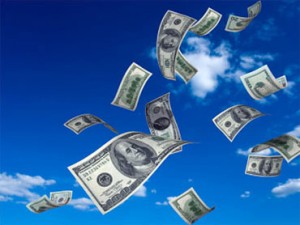 On August 15, 2010, the Federal Reserve’s “Regulation E” went into effect which will crack down on banks charging overdraft fees for debit and ATM transactions to existing customers.
On August 15, 2010, the Federal Reserve’s “Regulation E” went into effect which will crack down on banks charging overdraft fees for debit and ATM transactions to existing customers.
On July 1, 2010, banks were prohibited from automatically adding new customers to overdraft protection programs.Unless you opted-in for overdraft protection with your bank, prepare to have the service discontinued this morning.
Insufficient and/or overdraft fees from paper checks, ACH transactions, in-personal withdrawals, and automatic payments will continue to be covered for a fee, but ATM and debit transactions will be automatically denied.
Most consumers are probably already aware overdraft fees on debit and ATM transactions are ending due to the aggressive tactics taken by many banks prior to the August 15, 2010 deadline. If you have a bank account you have most likely been inundated with mailings, emails and even phone calls to pressure you to opt-in.
Revenue from Overdraft Fees
While annoying, the hard sell by the banks to retain their customers in these overdraft programs is completely understandable. Overdraft fees are a lucrative source of revenue for banks. Mike Moebs, CEO of Moebs Services, a research company in Illinois, says banks earned $37.1 billion on overdraft fees on debit cards and ATM transactions in 2009.
Revenue of $37.1 billion may explain why 20% of banks have decided to get into the overdraft business, despite the new rules according to Moebs.
Moebs reports that while “some institutions, like Bank of America, have chosen not to offer overdraft on debt cards and ATMs, almost an equal number of banks and credit unions have decided to enter the overdraft business for the first time.
A survey of 2,200 banks and credit unions done by Moebs, found that “frequent users of overdrafts appear to be close to 100%.” These frequent users represent roughly 10% of most portfolios and nearly 90% of the total overdraft fees collected each year.
Consumer Overdraft Profile
Further, a report from the Center for Responsible Lending (CRL) says that consumers who frequently overdraw their accounts tend to be the most financially vulnerable.
They are lower-income, single, non-white and rent their homes. “Charging large fees for typically small debit-card transactions erodes these consumers’ finances further.” The report further states the average overdraft purchase is only $17.00.
Deceptive Overdraft Marketing
The Center for Responsible Lending (CRL) issued a report on August 5, 2010, which stated banks and credit unions are “scrambling to pressure consumers to opt-in to overdraft coverage.” Not surprisingly, marketing firms are playing fast and loose with the facts about overdraft coverage to lure customers into opting-in..
The report stated, among other findings, “Some of the solicitations we have seen suggest that a customer will be charged a fee if their debit-card transaction is denied.
In reality, we know of no institution that does this, and the Federal Reserve has been clear that to do so would raise fairness concerns. Another example is when overdraft protection is advertised as a ‘fee service.' It is free, of course, if you never use it. But if you do use it, it is the highest cost credit they offer.”
The CRL is advocating more comprehensive overdraft marketing materials which fully explain the various overdraft options and protections available to consumers in addition to the opt-in overdraft coverage. The aggressive marketing tactics may continue as banks and credit unions pursue consumers who decided to opt-out.










